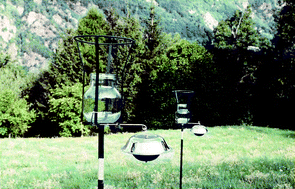Abstract
Forests were shown to play an important role in influencing atmospheric concentrations and transport of persistent organic pollutants (POPs) in the environment. World forests cover more than 4 billion hectares and contain up to 80% of the above ground organic carbon. Given the lipophilic nature of POPs, this suggests that forests can influence the environmental fate of POPs at a global scale. POP accumulation in forest canopies still presents points of concern given the complexity of these ecosystems. In particular, the role of ecological parameters such as LAI (leaf area index) and SLA (specific leaf area) and their dynamics during the growing season was not sufficiently investigated yet. This paper reviews, compares and interprets a unique case study in which air and leaf concentrations and deposition fluxes for selected polychlorinated


 Please wait while we load your content...
Please wait while we load your content...